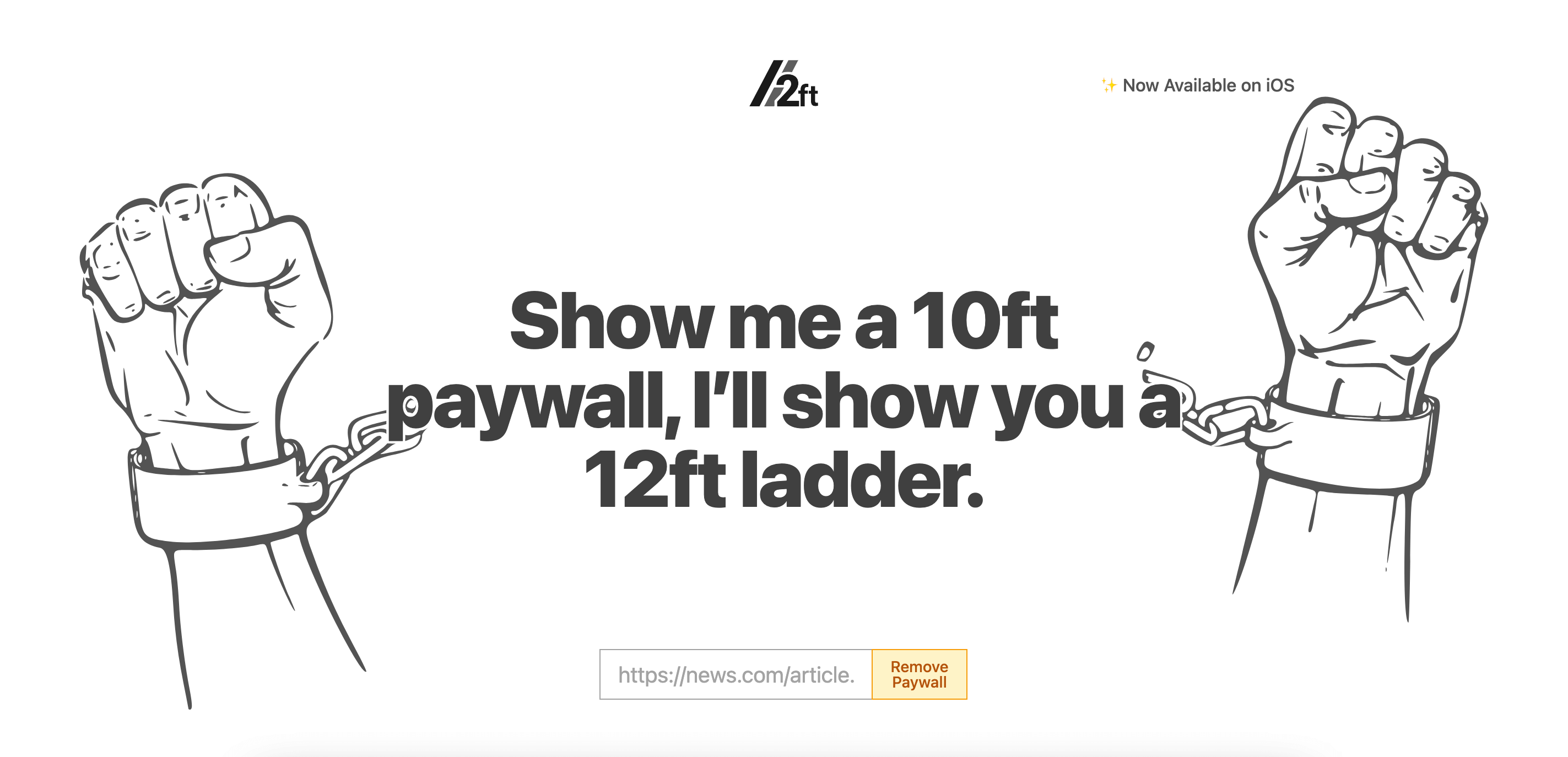If you’re tired of being locked away from the well of knowledge hidden behind paywalls, know that you’re not alone.
Whether you’re a student looking for research materials or a curious reader seeking in-depth news analysis, paywalls can be a roadblock. In an increasing trend, more than 69% of premium online content is hidden behind these digital barriers, restricting access to articles, research papers, and news.
However, ethical ways to access such content and get around a paywall do exist. Here’s a glimpse of what this article has in store:
- What exactly are paywalls, and why do publishers use them?
- How do search engines access paywalled content?
- Are paywall bypass tools legal?
- A comprehensive list of free methods and tools to bypass the paywall at your disposal.
What Is A Paywall, And Why Do Publishers Use It?
A paywall, in essence, is a digital barrier restricting access to articles and other forms of online content, and publishers employ it as a means to sustain quality journalism.
The reason why publishers use a paywall is crystal clear: the presence of ad blockers has significantly impeded publisher revenue streams.
Back in 2017, Google revealed that over 600 million devices employed ad blockers, signifying a substantial shift in user behavior. It’s reasonable to presume that this figure has surged exponentially in the years since then, with 42.7% of all internet users now applying ad blockers. These statistics underscore the core issue at hand.
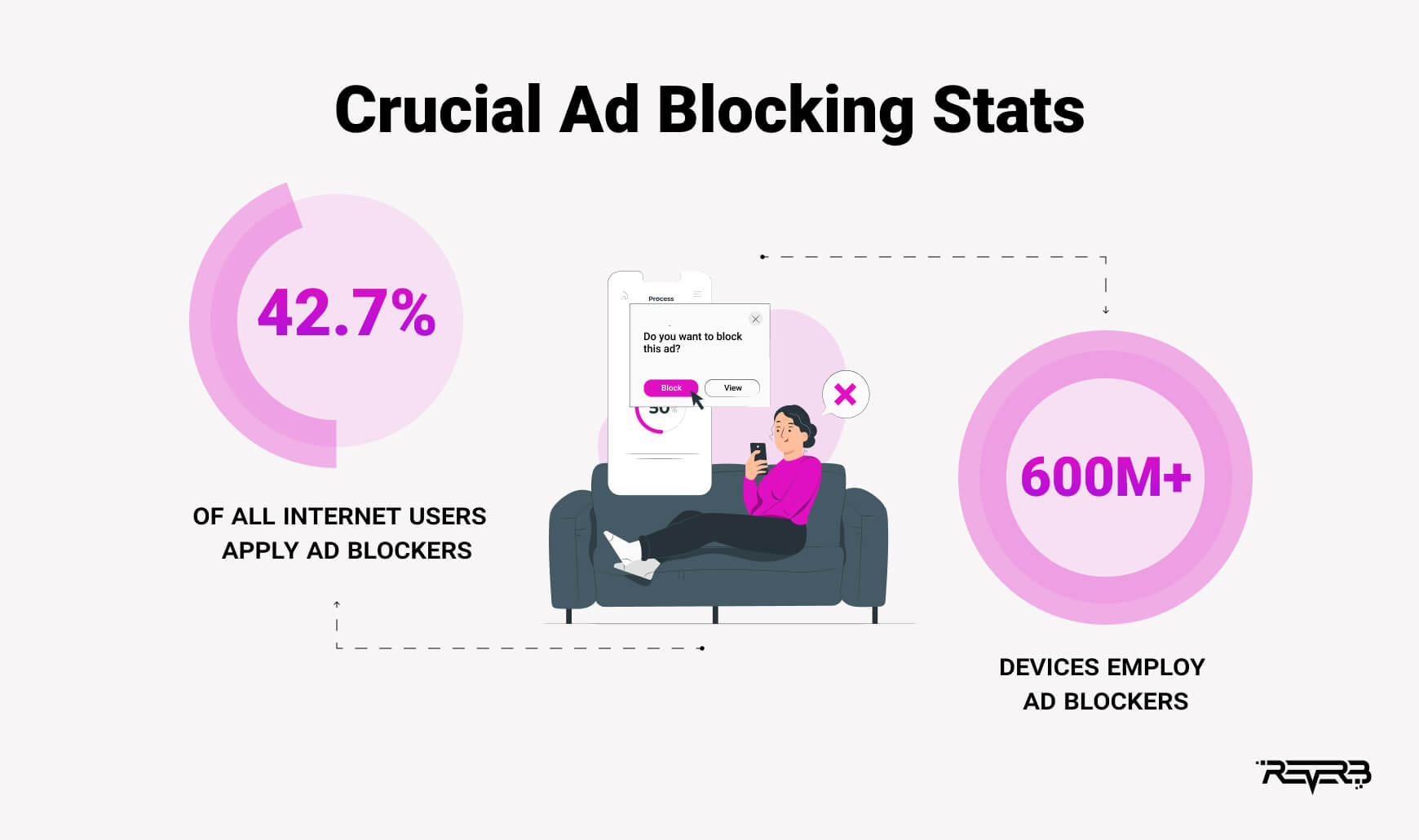
For prominent publishers heavily reliant on advertising revenue, the drift toward a subscription-based model became a pragmatic solution. By offering premium content behind paywalls, they can generate the revenue needed to produce in-depth reporting.
Main types of content paywalls
Paywalls come in diverse types:
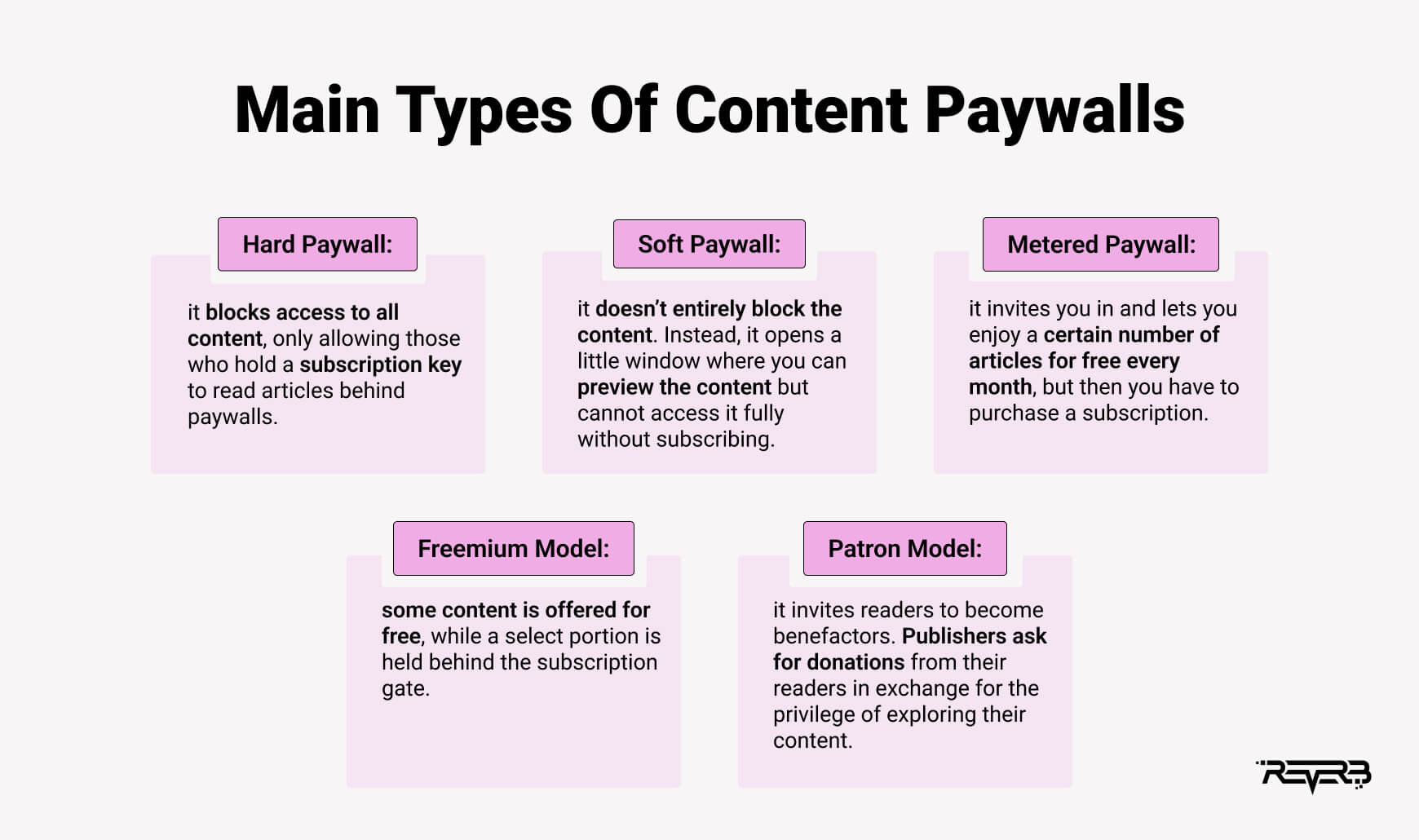
- Hard paywall: Imagine a fortress with its gates firmly shut. That’s precisely what a hard paywall is in the digital realm — it blocks access to all content, only allowing those who hold a subscription key to read articles behind paywalls
- Soft paywall: Unlike its more stringent sibling, the soft paywall takes a somewhat gentler approach. It doesn’t entirely block the content. Instead, it opens a little window where you can preview the content but cannot access it fully without subscribing.
- Metered paywall: The metered paywall invites you in and lets you enjoy a certain number of articles for free every month. But once that quota is met, it kindly nudges you to consider a subscription.
- Freemium model: Publishers employing this model tantalize readers with a dual offering — some content is offered for free, while a select portion is held behind the subscription gate.
- Patron model: The patron model invites readers to become benefactors. Publishers ask for donations from their readers in exchange for the privilege of exploring their content.
Blocking methods
Сontent blocking employs several techniques; however, there are three primary methods:
1. User-side with CSS
The CSS blocking method conceals content within the page’s underlying HTML, hiding a certain part of the article’s <div> and making it inaccessible to visitors. Initially, when a user lands on the webpage, the entire article is delivered. The server then checks the user’s entry permission and enforces the paywall if required.
It is widely used due to its ease of implementation, minimal side effects, and no delays in loading content.
2. User-side with JavaScript
Similar to CSS, user-side JavaScript hides content from users, making it visible upon paywall removal. However, in this method the text is hidden by JavaScript, with users having no access to it. As soon as they unlock the paywall, the content becomes visible. And while it’s similar to the first method, it can pose issues with advertising or script conflicts.
3. Server-side blocking
Server-side blocking prevents content from ever reaching the user’s browser. Typically, two versions of the content are sent: a full version and a cropped one.
While all users receive the cropped version by default, only subscribers gain access to the full content after passing through the paywall. Such blocking usually enhances security and deters bypassing. However, one drawback is that it can introduce lags when users access content and potentially impact SEO performance.
User-side blocking (CSS and JavaScript) ensures that all content remains accessible to Google’s prying eyes, regardless of user access. However, the server-side paywall approach paints a different picture. Here, search engine crawlers are denied access to anything concealed behind the paywall — if users can’t see it, neither can the search engine.
For that reason, server-side blocking utilizes hard and metered paywalls.
How is paywalled content accessed by search engines?
You might wonder how search engines access paywalled content. Well, it’s all about indexing.
Imagine this scenario: You’re eager to read a news article about Europe’s new digital law for free, so you type the correspondent key phrase “Europe’s new digital law” in your search query.

The first result that pops up is a featured snippet from the reputable source Le Monde. These snippets are an easy way for Google to provide you with a quick overview of what you’re searching.
But let’s say you’re not satisfied with just a snippet; you want to read the rest of the article. You click the link, anticipating a wealth of information. Yet here’s what greets you:

But how did Google see this article in full and manage to promote it as the first result?
It’s all about the work of web crawlers. These search engine bots crawl web pages, indexing content. But there’s a twist when it comes to paywalled content. While a regular user may land on a page with a hard paywall, web crawlers get full access to the article so that it can be indexed.
Some publishers even go the extra mile by providing a limited number of articles for free to search engines for indexing purposes. Not only can this help with search engine optimization, but it also benefits users in search of specific content.
As a result of this indexing, when users search for particular topics or keywords, search engines may display a “preview” or snippet from these indexed articles. This allows users to get a glimpse of the content and often includes a link to the full article, which may still be behind the paywall.
Google’s “First Click Free” feature is a great example. It encourages publishers to offer a limited number of free articles through Google search, enhancing the overall user experience.
With the goal of helping websites provide premium content while respecting boundaries, Google has developed structured regulations for subscription and paywall content, ensuring transparency, differentiating cloaking, and providing fairness for both users and publishers.
By reviewing the code of the example article above, we can see the following:
The “isAccessibleForFree” part is set to False, and the CSS selector is set to “paywall,” fully adhering to Google guidelines.

Blocked in EU because of GDPR
It’s worth noting that the General Data Protection Regulation (GDPR) has affected paywall accessibility. Some publishers have blocked access to European Union (EU) users due to GDPR regulations, making the bypassing of paywalls a more pressing concern for users in these regions.
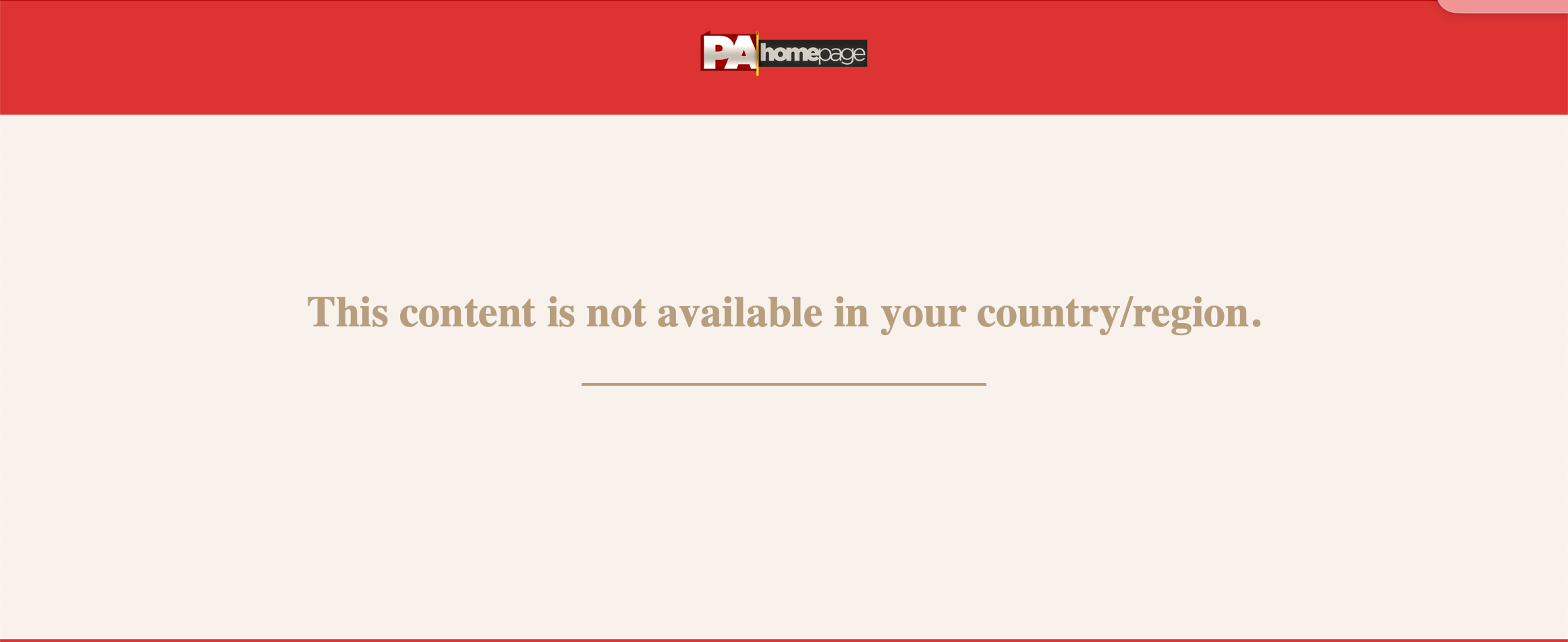
The reason some U.S. publishers do this is due to complicated advertising techniques that gather user data. And instead of limiting the data tracked to a specific region, some choose to block access entirely.
Is it legal to bypass paywalls?
Reading articles behind a paywall using the methods discussed below is generally legal and ethical. These methods are designed to access content made freely available by publishers or through open-access platforms.
However, it’s crucial to recognize the importance of respecting copyright and intellectual property (IP) rights. While accessing paywall-restricted content, make sure to avoid sharing copyrighted content without permission, and if possible, consider supporting publishers through subscriptions if you find their content valuable.
How To Get Around A Paywall: 6 Free Methods
You have probably come across articles suggesting methods like incognito browsing or copy-pasting the article name to access it directly from Google. While these solutions might work in some cases, you cannot always rely on them.
So, let’s dive into various solutions regarding how to read paywall articles absolutely free of charge.
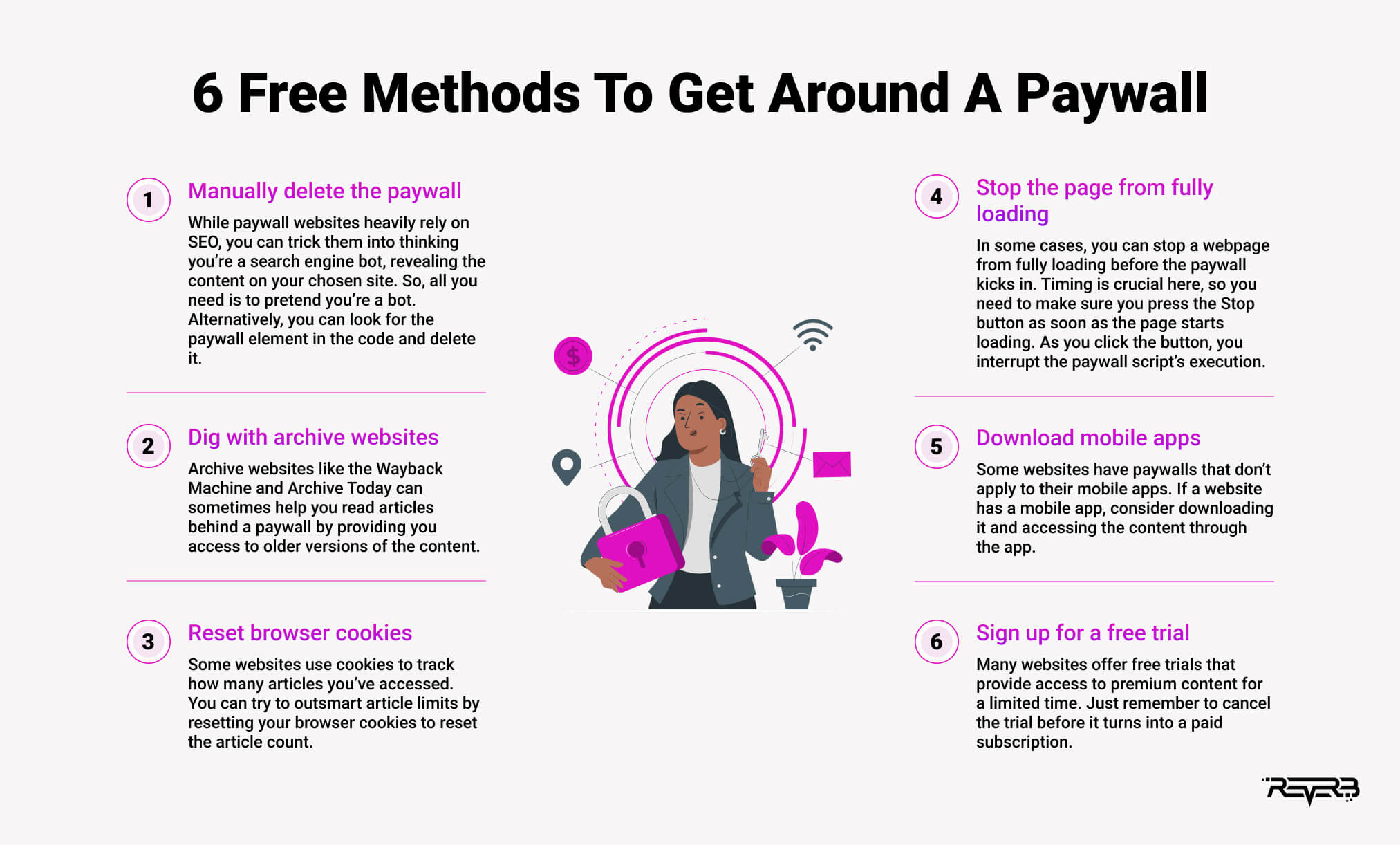
1. Manually delete the paywall
While paywall websites heavily rely on SEO, you can trick them into thinking you’re a search engine bot, revealing the content on your chosen site. So, all you need is to pretend you’re a bot.
Here are detailed step-by-step guide to manually delete the paywall:
- Right-click on an article and choose Inspect to access the webpage’s code.
- Go straight to Network Conditions under the More Tools section.
- Select the user agent “Googlebot”.
- Hard refresh the webpage.
Alternatively, you can look for the paywall element in the code and delete it. However, not all publishers can be that easily cracked, which is why there exist a number of other paywall bypass tools.
2. Dig with archive websites
Archive websites like the Wayback Machine and Archive Today can sometimes help you read articles behind a paywall by providing you access to older versions of the content. Just visit one of those websites and insert the link to the article. While it might not work for all sites, it’s worth a try if you’re looking for older articles.
How it works: These websites archive the page as if it were browsed by a search engine and give you back a readable version of the page you’re trying to view.
3. Reset browser cookies
Some websites use cookies to track how many articles you’ve accessed. You can try to outsmart article limits by resetting your browser cookies to reset the article count. All you need to do is go to your browser settings, navigate to Privacy or Security, find the section for clearing cookies, and select the option to clear cookies for the specific website. After you restart the browser, you will get access to the article.
How it works: This method prompts the website to treat you as a new visitor, resetting your article count and removing the news paywall.
4. Stop the page from fully loading
In some cases, you can stop a webpage from fully loading before the paywall kicks in. Timing is crucial here, so you need to make sure you press the Stop button as soon as the page starts loading.
Make sure to locate the button, often denoted by an “X” icon. You may be able to access the content that loaded before the news paywall script was executed. While it doesn’t guarantee success, it’s a smart trick to try when you encounter an obstinate paywall.
How it works: As you click the button, you interrupt the paywall script’s execution.
5. Download mobile apps
Another way to get around a paywall is by simply using your phone. Some websites have paywalls that don’t apply to their mobile apps. If a website has a mobile app, consider downloading it and accessing the content through the app. You might find that the paywall restrictions are not in place.
6. Sign up for a free trial
Many websites offer free trials that provide access to premium content for a limited time. While it isn’t technically a trick of how to read news articles for free, you can sign up for these trials to access the content you need. Just remember to cancel the trial before it turns into a paid subscription.
How it works: For a short period of time, you will get access to premium content.
The Best Tools To Bypass The Paywall
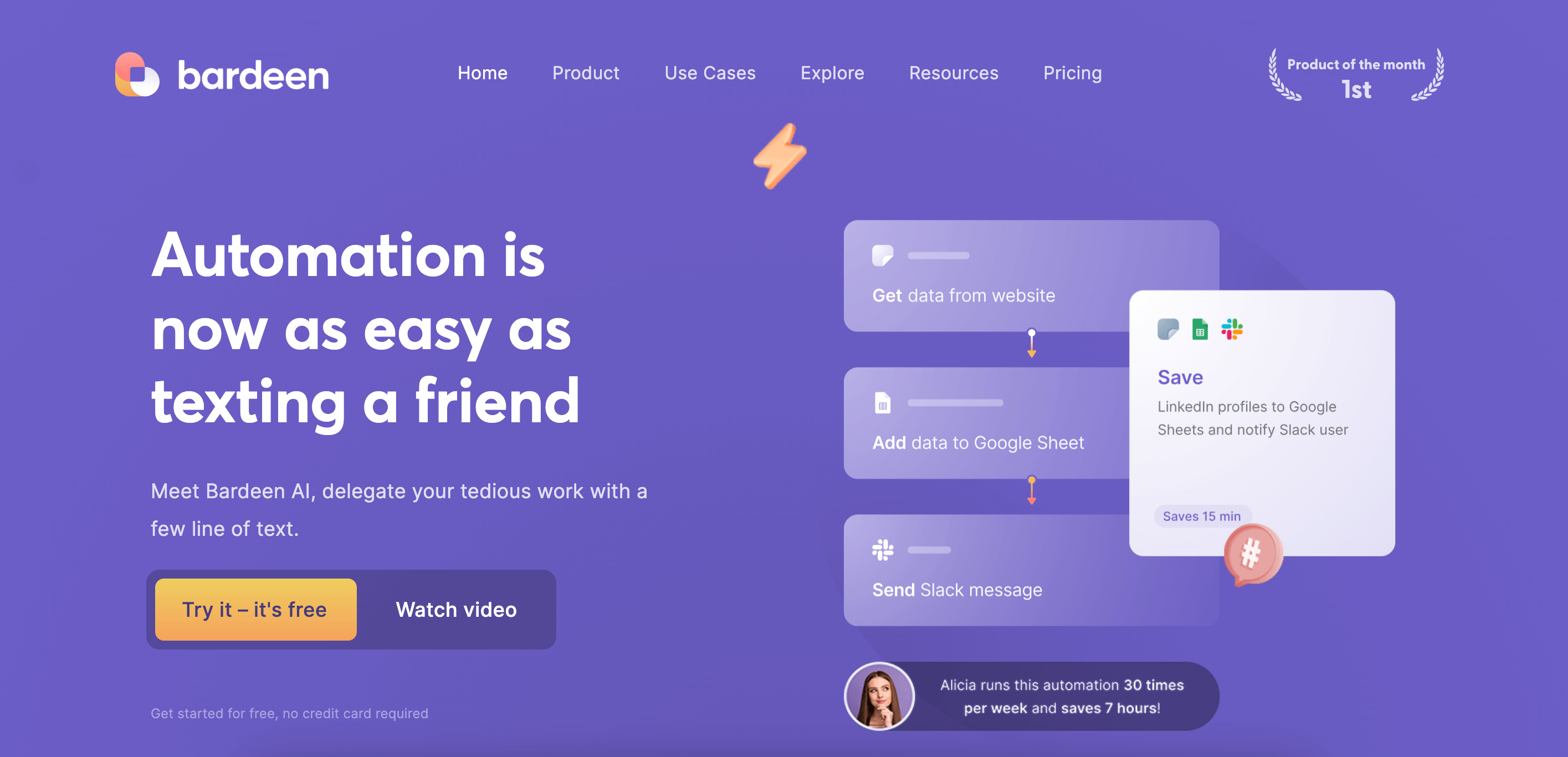
While Bardeen isn’t explicitly designed for removing paywalls, it can become a handy tool that allows you to access articles for free. Just download the Google Chrome/Safari extension, paste the URL of the article you want to read, click on the extension, and allow it to “bypass the paywall.”
How it works: Bardeen acts like a search engine bot in attempting to remove the paywall.
12ft Ladder is another free web-based tool that can help you get around paywalls. It’s a URL-shortening service that can sometimes unlock the full content of articles. Paste the paywall-protected URL into 12ft.io, click Remove Paywall, and it will provide you with access to the article without any restrictions.
How it works: 12ft Ladder uses the Google Cache feature to show you the full page.

This open-source GitHub project has over 20,000 stars. Available for Chrome, Firefox, and Edge browsers, this add-on is designed to help users read articles behind paywalls on various websites, making it easier to access content for free.
All you need to do is add the extension to your browser, visit a website you know has a paywall, click on the add-on, and unlock the content.
How it works: Bypass Paywalls overrides the restrictions by removing or masking elements of the page that prompt you to subscribe or pay for access.
4. Incoggo for Mac (soon for Windows, too)
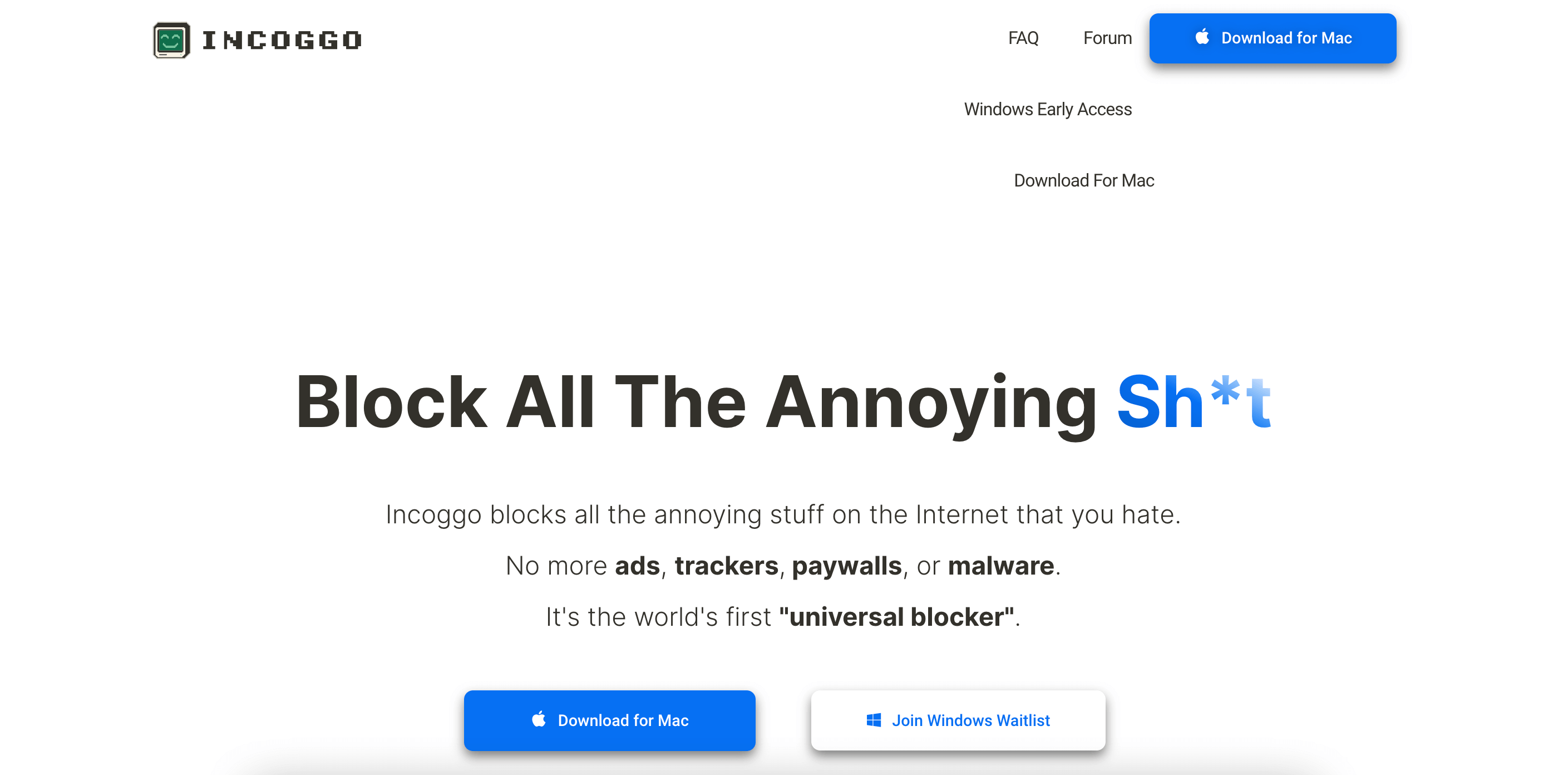
Incoggo is the first “universal blocker” that allows users to get rid of ads, trackers, malware, and paywalls. With just a few clicks, you’ll be able to enjoy the internet without any restrictions, 100% for free.
Available on any app or browser, including Safari, Firefox, Google Chrome, and Edge — even desktop apps like Slack, Spotify, Mail, and Discord — Incoggo allows you to access any content at any time.
How it works: When you click on a link to access an article, your browser sends data to the website. By manipulating this data to mimic traffic from search engines, this paywall bypass tool tricks the website into granting users full access.
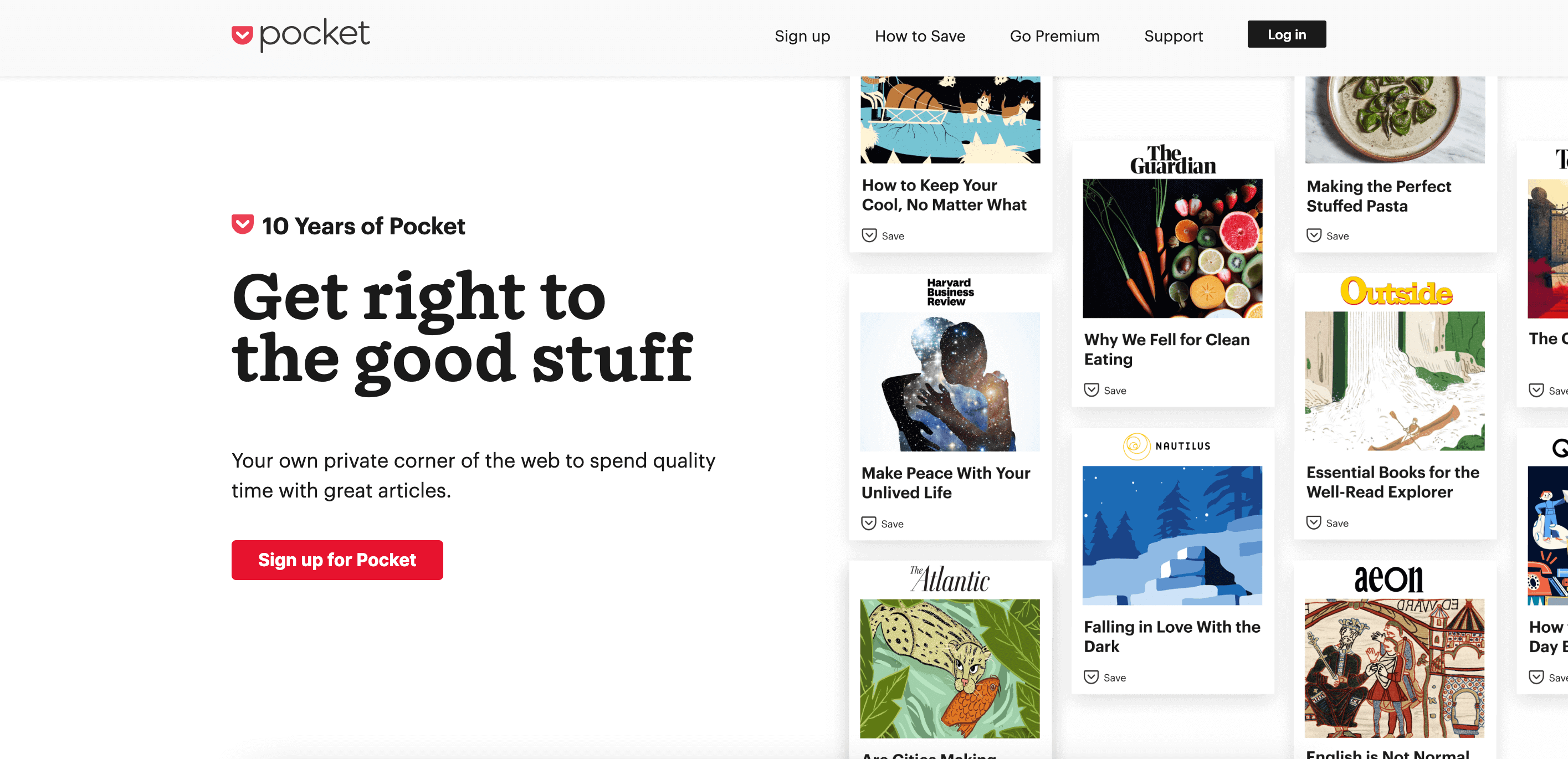
User-friendly tools like Pocket are designed for saving articles to read later. Create a Pocket account and get a browser extension. Once you find an article hidden behind a paywall, click on the tool icon and save the article to your account. In some cases, this method will deliver access to the full text.
How it works: When you open the saved article within your read-it-later tool, you may obtain unrestricted access to the complete text as if the paywall never existed.

In some cases, a simple app such as Shortcuts can help you access restricted content. Just download the app and choose the “unlock paywall” shortcut by right-clicking on the article.
How it works: By customizing the workflow, the app gives the command to the website, mimicking a user’s action when accessing it.
Conclusion
At this point, you should be an ace at bypassing paywalls.
Getting around paywalls doesn’t have to be a daunting task — you can unlock a world of knowledge without breaking the bank using the paywall bypass tools and methods described here. Just remember to use these methods ethically, considering the premium content and supporting publishers whenever possible.










